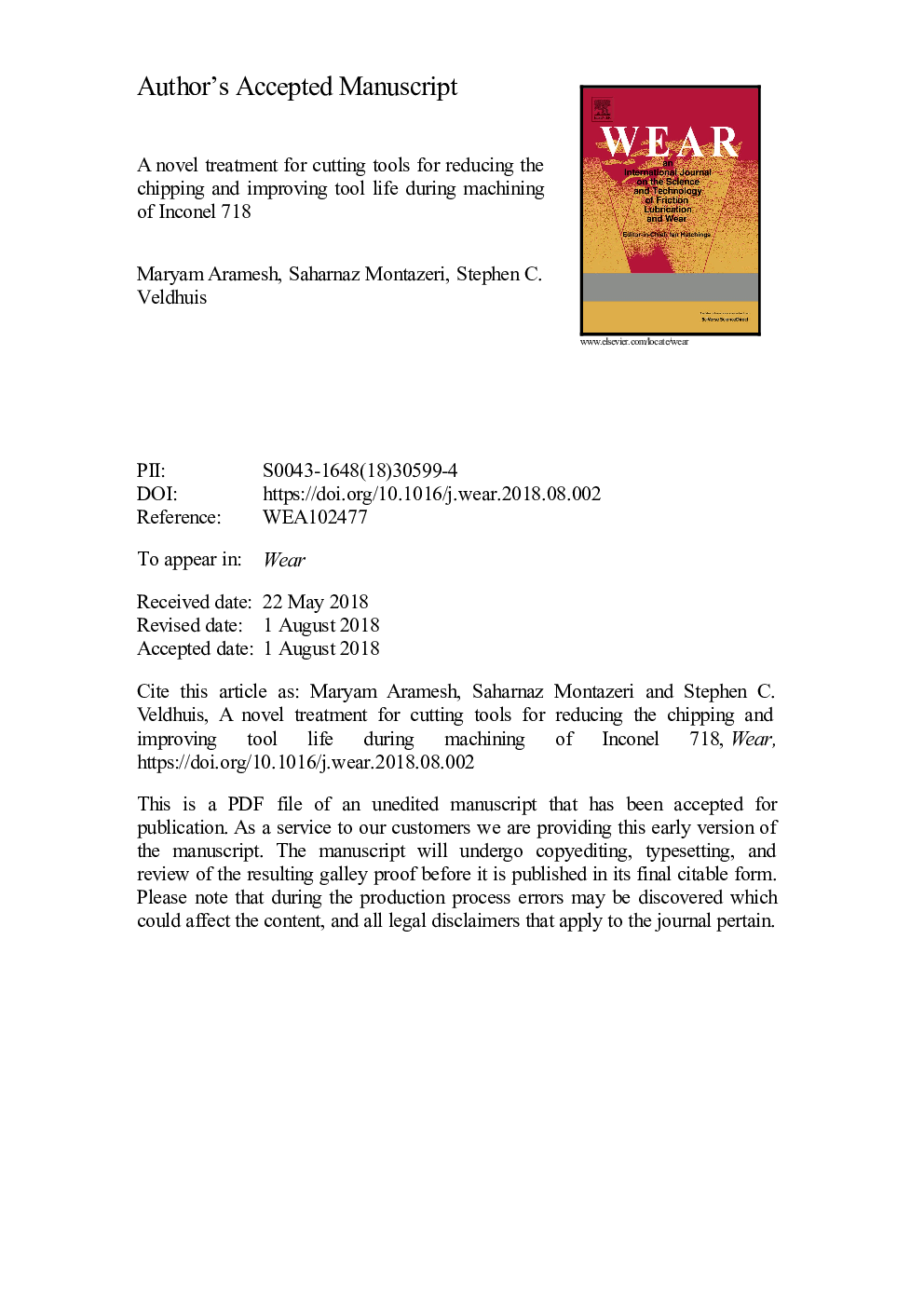| کد مقاله | کد نشریه | سال انتشار | مقاله انگلیسی | نسخه تمام متن |
|---|---|---|---|---|
| 9952563 | 1454933 | 2018 | 22 صفحه PDF | دانلود رایگان |
عنوان انگلیسی مقاله ISI
A novel treatment for cutting tools for reducing the chipping and improving tool life during machining of Inconel 718
دانلود مقاله + سفارش ترجمه
دانلود مقاله ISI انگلیسی
رایگان برای ایرانیان
کلمات کلیدی
موضوعات مرتبط
مهندسی و علوم پایه
مهندسی شیمی
شیمی کلوئیدی و سطحی
پیش نمایش صفحه اول مقاله

چکیده انگلیسی
Chipping and high tool wear are considered the most challenging issues associated with machining of superalloys, including Inconel 718. Despite numerous attempts in this area, it is still considered a critical drawback of this class of materials for application in different industries. A new tool treatment technique is proposed for improving the tool wear and reducing the chipping during machining of Inconel 718. The treatment involves less than two seconds of machining on an aluminum-silicon (Al-Si) workpiece prior to the actual machining of Inconel. In this way, the “pre-machining process”, deposited a very thin layer of Al-Si on the tool face. During the subsequent machining of the Inconel bar, the Al-Si was melted due to the high temperatures of Inconel machining. The molten material channeled itself through the microcracks on the tool surface and seized their propagation. The sliding of the tool on the low friction Al-Si layer resulted in much lower forces, less sticking, seizure and built-up edge formation and, thereby, in less tool wear and chipping. Several beneficial lubricious and thermal barrier tribo-films were also formed on the tool face, which further protected the tool from chipping and severe tool wear. Reducing the contact pressure, friction and temperature during machining resulted in considerable reduction in the machining induced work-hardening of the workpiece material, which is considered as one of the most important factors affecting chipping during machining of this class of materials. Moreover, the ductility of Al helped to dampen the vibrations during machining and helped in tool chipping prevention. Finally, the preconditioning of the tool itself through this process resulted in tool performance improvement by lowering the tool wear at the running-in stage. The new method resulted in a significant reduction in tool chipping and an overall improvement in tool life. Considerable improvements in the surface integrity of the machined part were also obtained. The contributing mechanisms are discussed using detailed material characterization techniques.
ناشر
Database: Elsevier - ScienceDirect (ساینس دایرکت)
Journal: Wear - Volumes 414â415, 15 November 2018, Pages 79-88
Journal: Wear - Volumes 414â415, 15 November 2018, Pages 79-88
نویسندگان
Maryam Aramesh, Saharnaz Montazeri, Stephen C. Veldhuis,